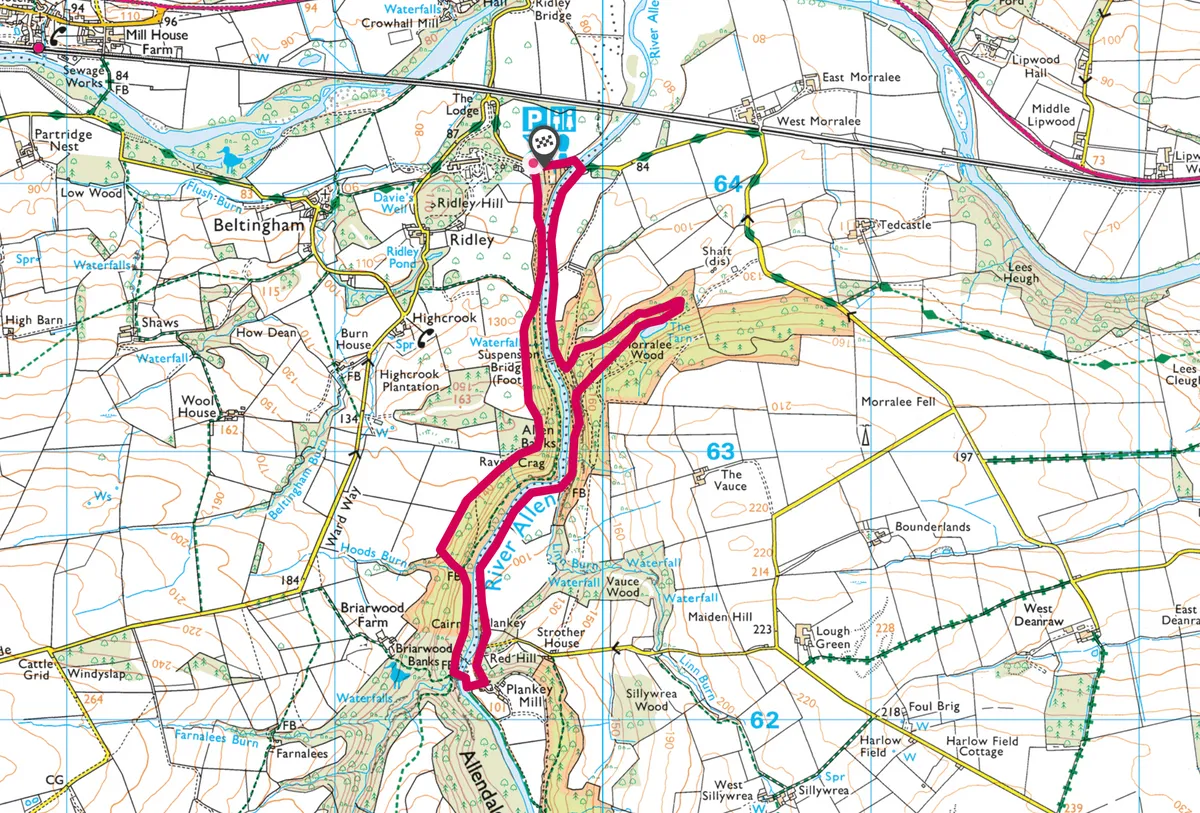This hidden corner of Northumberland presents a real lost-world feel. Where the River Allen has cut a precipitous gorge on its winding course to join the River Tyne, that sense is reinforced. Forests of beech and oak cascade down the steep-sided valley, the largest area of ancient woodland in Northumberland.
October is the best time to visit as autumn takes hold and the trees present a final flourish of colour before their leaves fall to the woodland floor. Allen Banks is also home to some spectacular fungi, including puffballs, sulphur tufts and fairy inkcaps, adding to the allure of an autumn wander.
Best walks in Northumberland National Park
The darks skies, open moorland, wild woodland and splashing waterfalls of Northumberland National Park hug the border between England and Scotland – explore the park on foot with our favourite walks
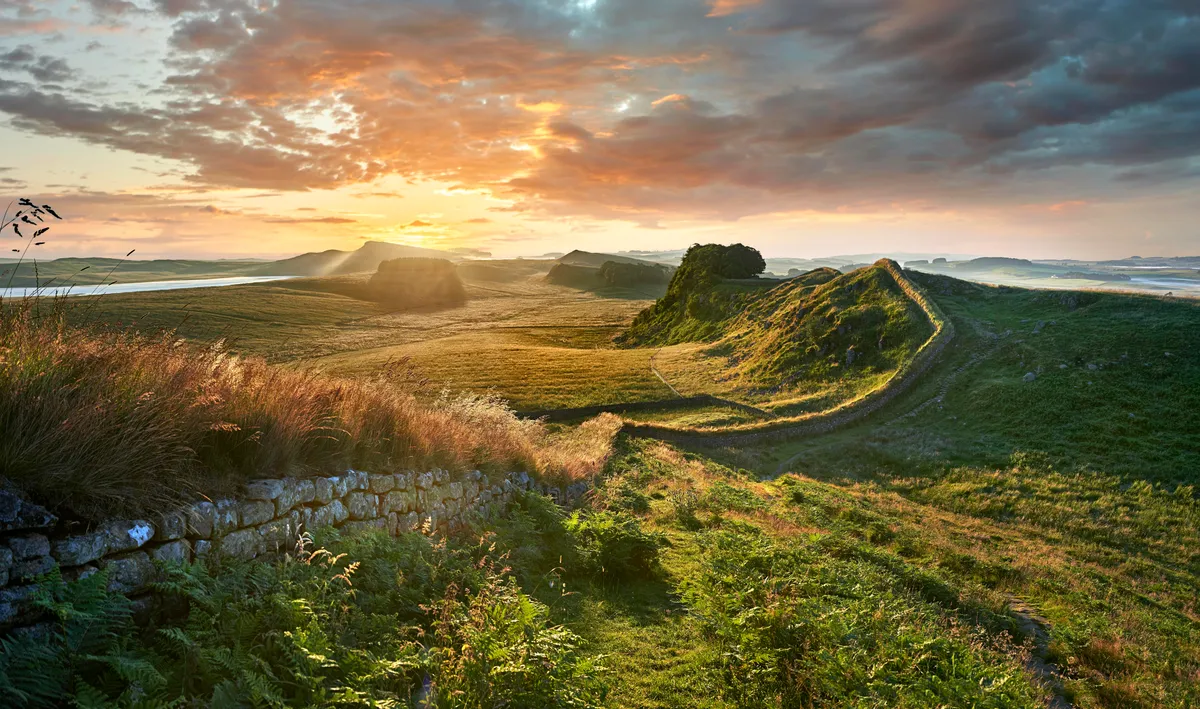
The area was devastated by floods and landslips during Storm Desmond in the winter of 2015/16 and, immediately afterwards, much of the woodland was closed to the public. While this was a disappointment for walkers, the closure was a bonus for wildlife and, before long, the local rangers started to see more red squirrels, roe deer and even otters. The network of paths has steadily reopened, though some closures remain in place.
Much of this landscape was influenced by its Victorian landowner Susan Davidson of Ridley Hall. Her work can be seen throughout the landscape, from the numerous steps and paths to the remains of several summerhouses dotted about the woodland. Most of the beech trees in the gorge were also planted by Susan in the 19th century. Local Victorian artist John Martin found inspiration in this gorge, walking alone “seeking all that was grand, romantic and beautiful”.
Allen Banks walk
3.5 miles/5.6km | 2 hours | moderate | 195m ascent
1. Ridley Hall
Start from the National Trust car park at Ridley Hall. This was once the walled kitchen garden for the house. From here, the riverside path heads south on the western bank of the River Allen. After 800 metres, look out for some steps on the right just before you reach the site of the old ‘wobbly bridge’, a suspension bridge that was sadly washed away in the floods that followed Storm Desmond, denying the chance of an exciting river crossing.
Fungi
More than 180 species of fungi have been found here, including some of the UK’s most poisonous, with names encouraging you to look, not touch: destroying angel, death cap and panther cap.
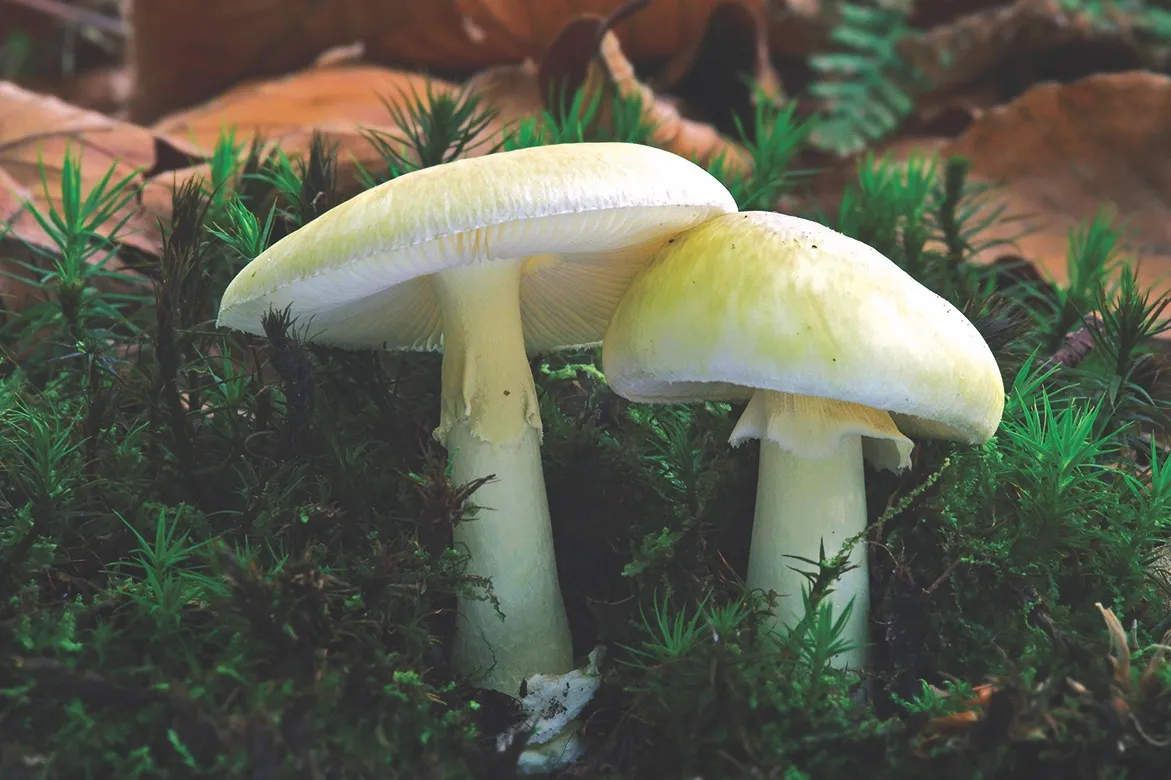
2. Raven Crag
A path heads steeply uphill to the top of the wooded gorge. Approaching a stile, don’t cross but turn left inside the fence to follow a trail up through trees. The fence disappears off to the right for a while and then reappears. This high-level route passes Raven Crag, with stunning views of the River Allen directly below. It’s an excellent vantage point to appraise the autumn colours in the tree canopy while listening for the mewing call of buzzards as they ride the thermals above.
On reaching a ravine, seek out a remarkable yet macabre viewpoint: a circular clearing with a floor made from hundreds of sheep’s knuckle bones, worn smooth by the passage of feet.
Dormice
The most northerly colony of dormice can be found here, but
it’s likely they will be tucked up fast asleep and out of sight. Sometimes it’s just good to know that they’re about.
Guide to dormice: how to identify, facts about the species and conservation
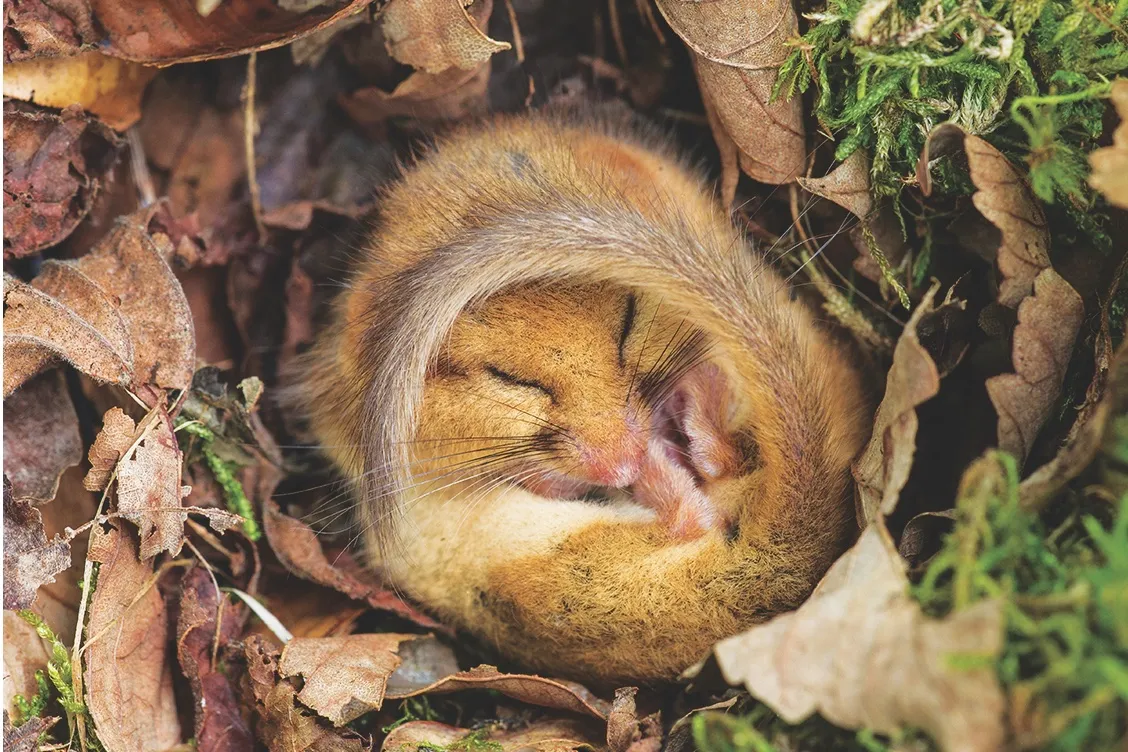
3. Briarwood Banks
A path winds steeply down beside Hoods Burn to reach the riverbank, where you turn right to cross the side stream on a footbridge.
Follow the riverside path as it winds through tall pine trees below Briarwood Banks, a Northumberland Wildlife Trust nature reserve that offers a brief diversion if you choose. Otherwise, cross another side stream on a footbridge before quickly reaching the metal bridge over the River Allen.
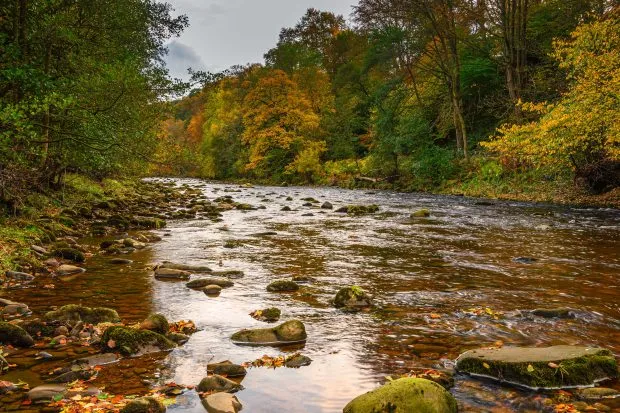
4. Plankey Mill
Cross the river to Plankey Mill. Once a water-powered corn mill, this is a great spot for a picnic. From here, head north on the lane that climbs steeply away from the mill, before quickly forking left on to a broad track. This runs on to a stile beyond; continue on through riverside meadows before re-entering the gorge. Crossing Linn Burn on a footbridge, stay on the lower path as it threads its way through gigantic boulders.
Woodpeckers
Although you won’t hear the resident lesser or greater spotted woodpecker drumming at this time of year, you may hear the yaffle of a green woodpecker or see a flash of green as it hunts for ants on the forest floor.
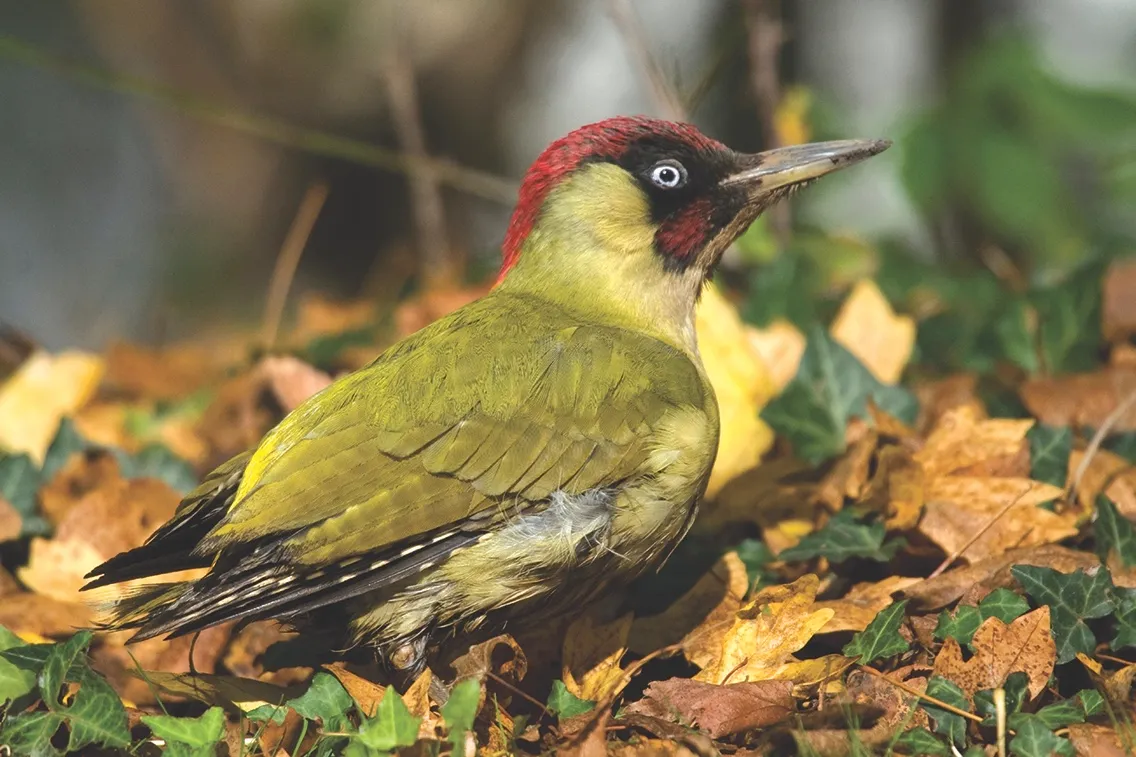
5. Morralee Wood
You have two options now. Stay close to the river, soon reaching the eastern side of the suspension bridge ruined by the December 2015 floods; this exciting section runs close to the water and offers intimate views of herons as they lift lazily from the water as you approach. Alternatively, for a worthy diversion, follow the purple waymarkers through Morralee Wood to Morralee Tarn. The area is home to woodpeckers, nuthatches and treecreepers, all of which will still be active, though largely silent, at this time of year. This is a great spot to look for red squirrels, too, as they busy themselves burying hazelnuts.
To reach the tarn, continue on the main path and then turn right at the next junction, right again and then, at a fork, take the next right. Keep following the purple waymarkers as you climb steadily and steeply in places. On reaching the top of the hill, a flight of steps on the left leads to Morralee Tarn.
Red squirrels
Allen Banks is one of the few places in northern England where you can still see our rare native red squirrels. They’re elusive, but be patient and you might spot them as they gather nuts for the winter ahead.
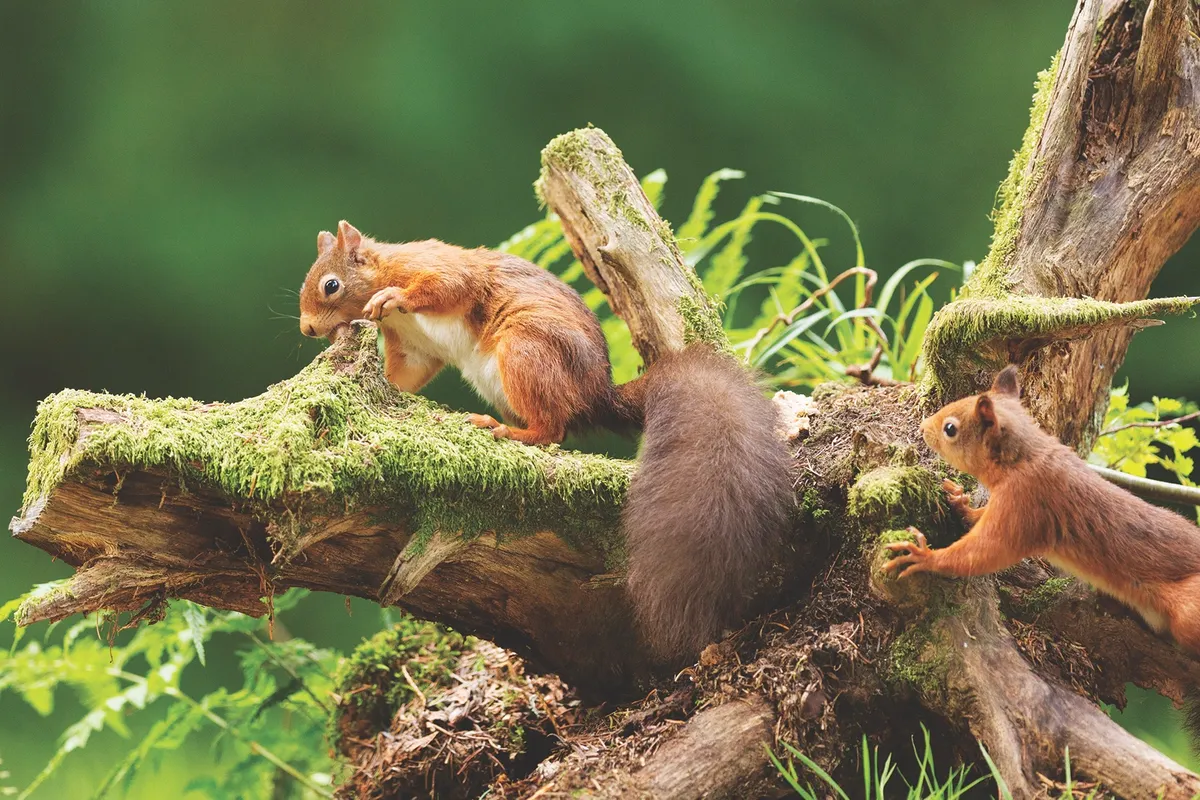
6. Morralee Wood
This isn’t a natural lake; it was created as a boating lake in the Victorian era. The Scots pine, larch and rhododendron were all planted in the 19th century by Susan Davidson. Here, there are wide-ranging views of the Tyne Valley and, in the far distance, the landscape through which Hadrian’s Wall marches. Ridley Hall is nestled down below in the trees.
With the tarn on your right, take the path heading away to the left, dropping down a slope to reach the main path through Morralee Wood. Route finding can be a bit tricky here, but the purple waymarkers will help you navigate (bring a map).
Continue north beside the water, passing through two meadows. Look out for dippers and grey wagtails, bobbing and wagging as they seek out invertebrates along the river. Follow the path under the roadbridge and turn right to join the road, taking a sharp right again to cross the river. The car park at Ridley Hall is just along to the left.
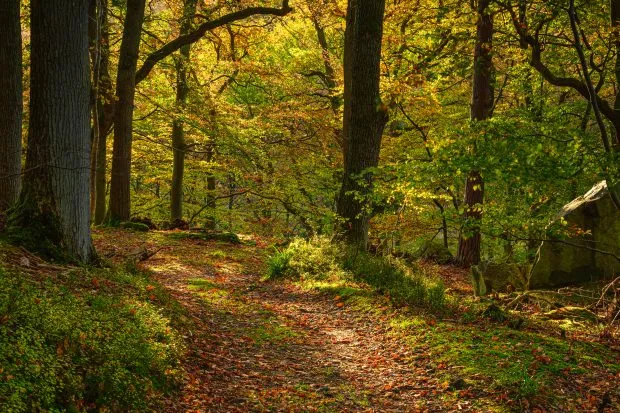
Allen Banks map
Allen Banks walking route and map
